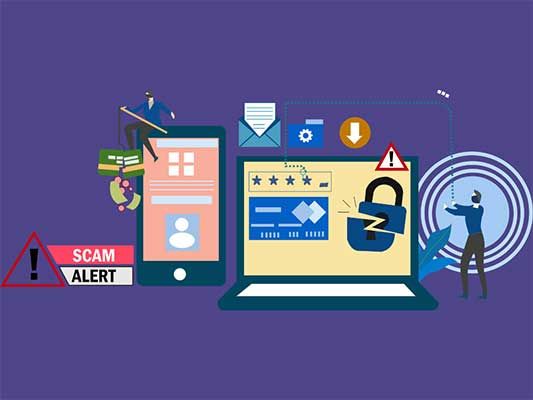
Protect Yourself: Unraveling the Copyright Violation Scam
In the digital age, where our online presence is paramount, the threat of scams and phishing attempts looms larger than ever. One prevalent scam making the rounds involves messages claiming copyright violations, an insidious tactic cybercriminals employ to extract login details and compromise personal information. In this article, we'll delve into the intricacies of this scam and explore practical steps to safeguard yourself.
The Copyright Violation Scam Unveiled
Imagine receiving an alarming message asserting copyright violations related to your online content. The urgency of the matter is emphasised, urging you to click on a provided link to address the alleged infringement. However, what seems like a legitimate concern may be a well-crafted scam designed to deceive and manipulate.
The Mechanics of the Scam
This fraudulent scheme usually takes the form of deceptive emails or messages that mimic trusted platforms like Facebook or other social media networks. The communication commonly alleges that your content breaches copyright policies, demanding swift action to address the issue. Intensifying the urgency, the scammer may even go as far as threatening account suspension or legal repercussions unless immediate steps are taken.
Red Flags to Identify the Scam
1. Generic Language
Scam messages often use generic language and lack specific details about the alleged violation.
2. Urgency and Threats
Scammers thrive on creating urgency and fear. Exercise caution if the message insists on immediate action under the threat of severe consequences.
3. Unusual Email Addresses
Check the sender's email address. Legitimate notifications usually come from official domain names, not suspicious or misspelled addresses.
4. Fake Links
Hover over any links provided without clicking. If the URL seems unusual or redirects to an unfamiliar website, it's likely a scam.
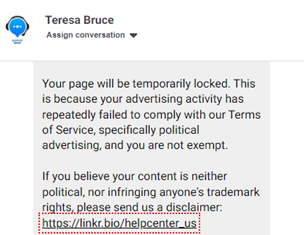
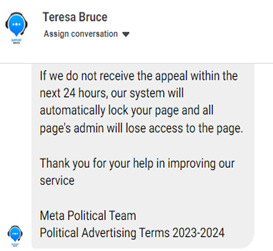
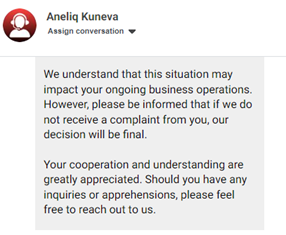
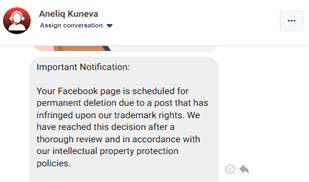
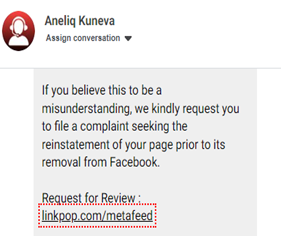
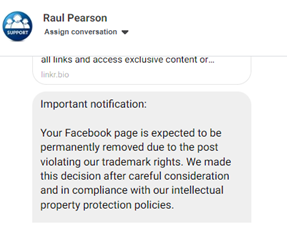
Securing Yourself: Recommended Actions
1. Avoid Clicking or Responding
When confronted with such messages, a fundamental guideline is refraining from clicking on any links or responding to the sender. Clicking may expose you to malicious websites or initiate the download of harmful software.
2. Verify Authenticity
If you receive a copyright violation notice, independently confirm its authenticity. Log in to your account directly through the official website or app instead of using the provided links.
3. Review Account Settings
Navigate to your account settings directly from the platform to scrutinise any notifications or alerts related to copyright violations. Legitimate platforms will furnish information within the official dashboard.
4. Activate Two-Factor Authentication (2FA)
Bolster your account security by activating 2FA. This extra layer of protection necessitates a second verification form, enhancing security beyond a mere password.
5. Educate Your Team
If you're part of a business or organisation, educate your team members about these scams. Establish clear protocols for handling and reporting such messages to the appropriate channels.
Reporting the Scam
If you encounter a dubious copyright violation message, it is crucial to report it to the respective platform. Many platforms offer specialised channels for reporting phishing attempts and scams. Taking this step contributes to the broader initiative to combat online fraud.
In Conclusion
The copyright violation scam employs cunning tactics, exploiting individuals' anxieties about their online content. By remaining vigilant, recognising warning signs, and proactively securing your accounts, you can fortify yourself against these deceptive schemes. When uncertain, independently verify and promptly report any suspicious activity to the relevant platform. Safeguarding your online presence is collaborative, and knowledge is your most potent defence against cyber threats. Stay informed, stay secure.